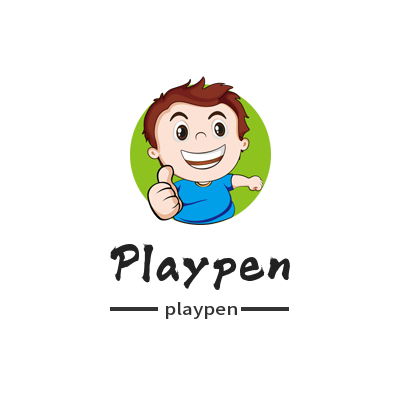The timing of using a baby playpen can be determined based on the baby's development and mobility. Here are some general guidelines:
Crawling Stage: Most babies start crawling around 6 months of age, which is a common time to consider a playpen. When babies are able to crawl on their own and begin to explore their surroundings, a playpen can provide a safe area that limits their range of motion and avoids accidental injury.
Toddler Stage: When babies start to learn to walk and try to stand and walk, using a playpen can help them maintain balance and stability. Babies may fall while learning to walk and stand, and a playpen can provide some support and protection.
Safe Isolation Needs: Some families may require the use of a playpen to achieve safe isolation in certain situations. For example, when dangerous items or equipment are present indoors, or when babies need to be confined to a specific area, such as preventing them from entering dangerous stair areas or the kitchen.
However, the timing of playpen use should also be determined based on the individual baby's development and behavior. Some babies may be more active and active during the crawling or toddler stages and need to start using a playpen earlier. Other babies may be calmer and well-behaved and do not need to limit their range of motion prematurely.
Additionally, the use of playpens should be combined with constant supervision and attention. A playpen simply provides a relatively safe area, while the baby still requires the attention and care of a parent or guardian. The timing of playpen use is best determined in conjunction with the baby's development and specific family needs. If in any doubt, it is recommended to seek the advice of a pediatrician or professional.

When considering the use of a playpen, here is some additional information and guidance:
Choose the right size and height: The playpen should be tall enough to prevent the baby from climbing over or climbing out. Usually, the height of the playpen should be at least above the baby's chest height. Also, make sure the gaps in the fence are small enough to prevent your baby's head or body from getting stuck.
Stable and reliable structure: The structure of the playpen should be stable and reliable, able to withstand the pressure and movement of the baby. The fence's connectors and door latches should be strong, and the fence itself should be able to stand stably to prevent collapse or movement.
Safety standards and certifications: Choose a playpen that meets safety standards and certifications. For example, American ASTM international standards, JPMA certification (Juvenile Products Manufacturers Association), European EN standards, etc. These standards and certifications ensure that fences meet safety and quality requirements.
Regular inspection and maintenance: During the use of the baby fence, regularly check the safety and stability of the fence. Make sure there are no loose or damaged fence connections, catches, and structure. Also, promptly repair or replace any damaged parts.
Fence Location and Environment: When placing your playpen, choose an area that is safe and free of hazardous items. Avoid placing the fence near combustibles, sockets, electrical appliances and other potential sources of danger. Make sure the ground around the fence is level and stable to prevent the fence from tilting or becoming unstable.
Supervision and interaction: Although using a playpen can provide some safety and freedom of movement, constant supervision and interaction are still required. Maintain contact with infants, provide attention and comfort, and respond to their needs and interests.
Long-term use considerations: Playpens are typically used during a baby's crawling and toddler stages, but some playpen designs can also accommodate a baby's growth. Some playpens have adjustable heights and expandable structures that can be adjusted and extended as your baby grows and develops.
In short, using a baby playpen can bring benefits such as safety protection, free space for activities, independence development and home arrangement. However, parents should choose the appropriate timing and type of enclosure based on the baby's development and specific needs, and continue to pay attention and monitor the baby.

